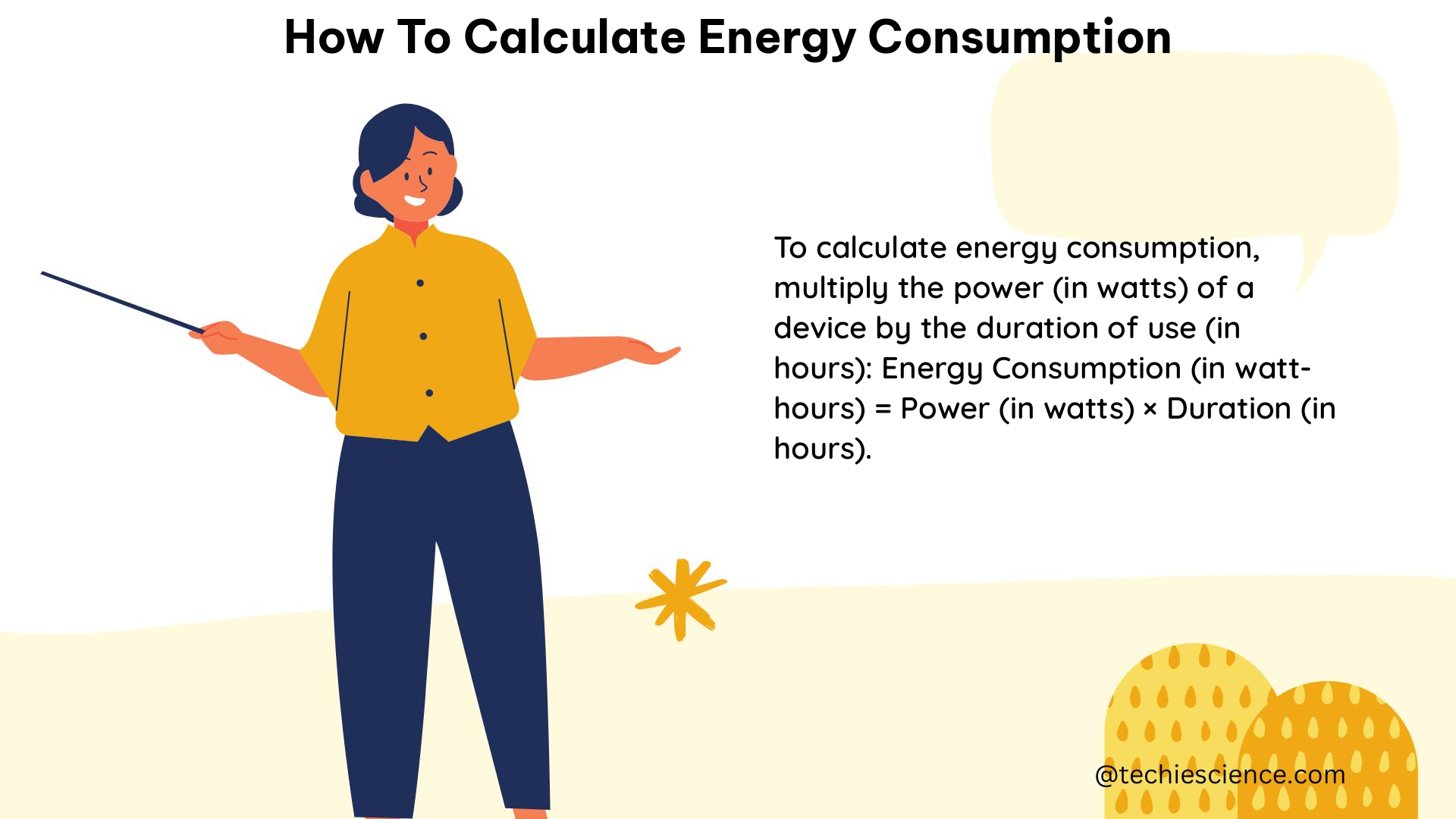Energy consumption is a critical factor in various industries, from manufacturing to residential applications. Accurately calculating energy consumption is essential for optimizing energy efficiency, reducing costs, and minimizing environmental impact. This comprehensive guide will provide physics students with a detailed understanding of the methods and formulas used to calculate energy consumption.
Identifying the Energy Source
The first step in calculating energy consumption is to identify the type of energy being used. This could be electricity, natural gas, fuel oil, steam, or any other form of energy. Understanding the energy source is crucial as it determines the appropriate units and measurement techniques.
Measuring Energy Use

Accurately measuring energy use is the foundation for calculating energy consumption. There are several methods available, each with its own advantages and limitations:
Metering
Installing a real-time energy meter is the most accurate method for measuring energy use. These meters provide detailed, continuous data on energy consumption, allowing for precise calculations. However, this approach may require additional equipment and setup.
Billing Data
Using energy bills provided by utility companies is a simpler method, but it may not reflect the actual energy use due to factors such as estimated readings or billing cycles. This method is less accurate than metering, but it can provide a general overview of energy consumption.
Data Logging
Employing data loggers to record energy use at regular intervals is a more accurate approach than billing data. Data loggers can capture detailed energy consumption patterns, but they may require additional equipment and setup.
Calculating Energy Consumption
Once the energy use has been measured, the energy consumption can be calculated using the following formula:
Energy Consumption = Energy Use × Time
Where:
– Energy Use is the amount of energy used by the system or device, measured in units such as kilowatt-hours (kWh), British thermal units (Btu), or joules (J).
– Time is the duration of the energy use, measured in hours, days, weeks, or months.
For example, if a device uses 1000 watts (W) of power for 5 hours, the energy consumption would be:
Energy Consumption = 1000 W × 5 hours = 5000 watt-hours (Wh)
To convert this to a more common unit, such as kilowatt-hours (kWh), you would divide the result by 1000:
5000 Wh ÷ 1000 = 5 kWh
Analyzing Energy Consumption
After calculating the energy consumption, it is essential to analyze the data to identify trends, patterns, and anomalies. This analysis can help you identify opportunities for energy savings and efficiency improvements.
Some key analysis techniques include:
– Comparing energy consumption of different devices, systems, or buildings
– Comparing energy consumption over different time periods (e.g., day vs. night, weekdays vs. weekends, seasons)
– Using statistical methods, such as regression analysis or correlation analysis, to explore relationships between energy use and influencing factors (e.g., output, climatic conditions)
Setting Energy Performance Objectives and Targets
Based on the analysis, you can set energy performance objectives and targets that are specific, measurable, achievable, relevant, and time-bound (SMART). These objectives and targets will help you monitor and improve your energy performance over time.
For example, you could set a goal to reduce your energy consumption by 10% over the next five years or to reduce your lighting systems’ energy consumption by 10% over the next two years.
To ensure that you meet your objectives and targets, you should establish baselines, performance metrics, and energy performance improvement opportunities that are aligned with your goals and strategies. It is also essential to communicate these objectives and targets to all personnel who can impact or contribute to them, and obtain management approval to ensure that the necessary resources are available.
Advanced Techniques and Considerations
For more advanced energy consumption calculations, you may need to consider additional factors, such as:
Energy Efficiency Calculations
Calculating the energy efficiency of a system or device can provide valuable insights into its performance. This can be done using formulas like the Energy Efficiency Ratio (EER) or the Coefficient of Performance (COP).
Energy Intensity Calculations
Measuring the energy intensity of a process or facility can help identify areas for improvement. Energy intensity is typically calculated as the energy use per unit of output or floor area.
Thermal Energy Calculations
For systems that use thermal energy, such as heating or cooling systems, you may need to consider factors like heat transfer, thermal resistance, and specific heat capacity.
Power Factor Calculations
In electrical systems, power factor is an important consideration, as it can impact energy efficiency and costs. Calculating the power factor can help optimize the system’s performance.
By incorporating these advanced techniques and considerations, you can gain a deeper understanding of your energy consumption and identify more targeted opportunities for improvement.
Conclusion
Calculating energy consumption is a crucial step in optimizing energy efficiency and reducing costs. This comprehensive guide has provided physics students with a detailed understanding of the methods and formulas used to measure and analyze energy consumption. By applying these principles, you can make informed decisions, set achievable energy performance objectives, and drive sustainable energy practices in your field of study or future career.
References
- EERE Energy Guide: Step 2.4 Analyze energy consumption and costs
- EERE Energy Guide: Foundational Step 2.9 Establish energy performance improvement objectives and targets
- ENERGY SAVINGS MEASUREMENT GUIDE
- Energy Efficiency Ratio (EER) Calculation
- Coefficient of Performance (COP) Calculation
- Energy Intensity Calculation
- Power Factor Calculation

The lambdageeks.com Core SME Team is a group of experienced subject matter experts from diverse scientific and technical fields including Physics, Chemistry, Technology,Electronics & Electrical Engineering, Automotive, Mechanical Engineering. Our team collaborates to create high-quality, well-researched articles on a wide range of science and technology topics for the lambdageeks.com website.
All Our Senior SME are having more than 7 Years of experience in the respective fields . They are either Working Industry Professionals or assocaited With different Universities. Refer Our Authors Page to get to know About our Core SMEs.